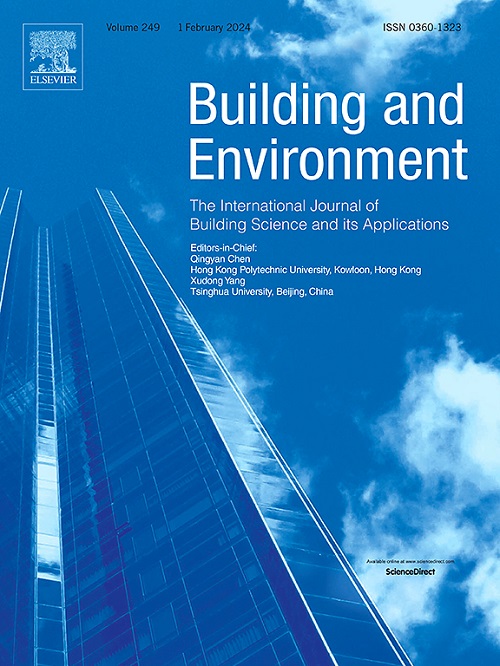A modified multi-node human thermoregulation model with improved sweating response to simulate human physiological behaviours in warm and hot environments
IF 7.1
1区 工程技术
Q1 CONSTRUCTION & BUILDING TECHNOLOGY
引用次数: 0
Abstract
The present research developed a modified multi-node thermoregulation model derived from the renowned Tanabe and JOS series models (JOS-2 and JOS-3). The JOS-3 model's predictions showed an abrupt spike in mean skin temperature, contradicting the findings from experiments. The JOS-3 model's sweating mechanism exhibits an inconsistency, and the sweating mechanism is not triggered promptly and accurately, leading to a sudden rise in skin temperature. This disparity significantly impacts the ability of the model to precisely replicate thermoregulatory responses under various climatic conditions and levels of physical activity. The proposed modified thermoregulation model extends the JOS-3 model by modifying the set-point temperature and sweating signals. The performance of the developed modified thermoregulation model is thoroughly analyzed under various conditions involving different environmental conditions, activity levels, and clothing types. The proposed model eliminates abrupt rise in the mean skin temperature and improves its prediction accuracy, notably reducing mean skin temperature RMSE in hot-humid conditions (0.66 °C vs. 0.85 °C) compared to the JOS-3 model. In hot-dry settings, improvements are significant, reducing the mean skin temperature and core temperature RMSE (0.48 °C vs. 0.06 °C and 0.05 °C vs. 0.02 °C, respectively). Overall, the modified thermoregulation model offers a reliable and accurate solution to analyze human physiological conditions for a wide range of practical problems.
改进出汗反应的多节点人体体温调节模型,模拟人类在温暖和炎热环境中的生理行为
本研究从著名的田边和 JOS 系列模型(JOS-2 和 JOS-3)中衍生出一个改进的多节点体温调节模型。JOS-3 模型的预测结果显示,平均皮肤温度会突然飙升,这与实验结果相矛盾。JOS-3 模型的出汗机制表现出不一致性,没有及时准确地触发出汗机制,导致皮肤温度突然升高。这种差异极大地影响了该模型在不同气候条件和体力活动水平下精确复制体温调节反应的能力。所提出的修正体温调节模型通过修改设定点温度和出汗信号对 JOS-3 模型进行了扩展。在涉及不同环境条件、活动水平和服装类型的各种条件下,对所开发的修正体温调节模型的性能进行了全面分析。与 JOS-3 模型相比,所提出的模型消除了平均皮肤温度突然升高的现象,并提高了预测精度,显著降低了湿热条件下的平均皮肤温度均方根误差(0.66 °C:0.85 °C)。在干热条件下,该模型也有显著改善,降低了平均皮肤温度和核心温度均方根误差(分别为 0.48 °C 对 0.06 °C 和 0.05 °C 对 0.02 °C)。总之,改进后的体温调节模型为分析各种实际问题的人体生理状况提供了可靠而准确的解决方案。
本文章由计算机程序翻译,如有差异,请以英文原文为准。
求助全文
约1分钟内获得全文
求助全文
来源期刊

Building and Environment
工程技术-工程:环境
CiteScore
12.50
自引率
23.00%
发文量
1130
审稿时长
27 days
期刊介绍:
Building and Environment, an international journal, is dedicated to publishing original research papers, comprehensive review articles, editorials, and short communications in the fields of building science, urban physics, and human interaction with the indoor and outdoor built environment. The journal emphasizes innovative technologies and knowledge verified through measurement and analysis. It covers environmental performance across various spatial scales, from cities and communities to buildings and systems, fostering collaborative, multi-disciplinary research with broader significance.
 求助内容:
求助内容: 应助结果提醒方式:
应助结果提醒方式:


